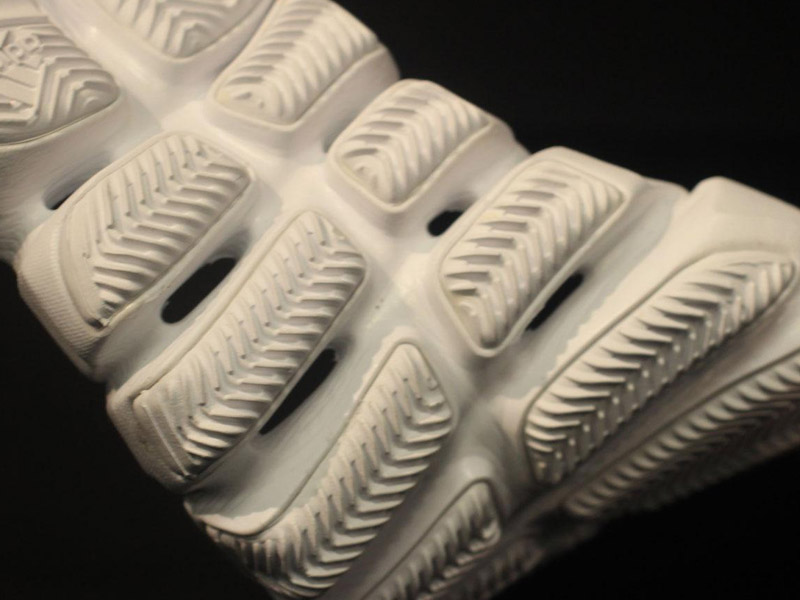With the evolution of the design concept, footwear design is developing in the direction of more diversification and high performance, which puts forward new requirements for the anti-slip (especially side-slip), starting, braking and other functions of the sole. In this process, the type of shoe and its use environment become a key consideration in the design of the sole pattern.
1. Regular patterns
Regular patterns are mostly composed of geometric figures, one or more graphic elements constitute a basic pattern, along a specific curve layout, in accordance with a certain space, interval, direction to form an orderly pattern.
Two, pattern combination art
Pattern combination pattern through different patterns interweave and echo, form a whole. In a certain space, it is arranged repeatedly according to a certain structure to form a small-scale regular pattern. This combined pattern is more suitable for the stress characteristics of the foot, compared to a single geometric pattern combination, it is better in terms of anti-slip performance, especially suitable for specific sports.
Three, three-dimensional pattern design
Three-dimensional pattern shoes have a unique style, which is characterized by deeper pattern groove, larger structure, and even nail ring pattern, mainly suitable for specific use environments, such as professional sports shoes and special purposes.
4. Special design
Some sole designs utilize simple connection structures or material properties to meet specific sports needs, demonstrating a higher level of professionalism.
5.Fifth, anti-skid performance analysis
For the regular pattern, under the load in the same direction, the anti-skid performance of different sole patterns on the same road surface is different: on the marble road surface, the continuous pattern is the best, followed by the continuous square, and the anti-skid block is the worst; On the board road, the continuous pattern also performs the best, followed by the continuous square, and the non-slip block is the worst; On the cement road surface, the continuous pattern is the best, followed by the non-slip block, and the square continuous is the worst. The comparison of the anti-skid performance of the same sports sole pattern on the same road under different load directions shows that the friction coefficient between the sole and the ground decreases with the increase of load.

6. Grip and adsorption force
Ordinary sports shoes usually use thick and deep herringbone and water ripples or reverse ripples to meet basic needs, while professional sports shoes need to be finely designed according to actual needs. The roughness of the pattern will also affect the slip, the rougher the pattern, the greater its force deformation ability, the stronger the anti-slip ability.
7. Strategies to enhance grip
One is to reduce the peak value, design a thin flake pattern, and the pattern is easy to fall to the ground when used, increasing the contact area, thereby improving the anti-slip effect. The most common design to achieve multi-directional anti-slip effect is the ripple pattern;
The second is to design the tacks. At present, rubber shoe nails are mainly used. By adjusting the landing Angle of the shoes nails, the design is changed from close to vertical landing to greater than acute Angle to enhance the grip.
Through these design strategies, the sole pattern can not only meet the basic anti-skid and braking functions, but also be optimized according to different sports needs to improve the performance and applicability of sports shoes.